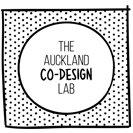Co-design For Well-being
In this webinar recording, Angie Tangaere of The Southern Initiative and Dr Penny Hagen from The Lab share what we have learned from working with whānau, community facilities, early child health services and researchers to understand how tamariki can be supported to have the best start in life.
In our approach we are learning how we can bring together mātauranga, western science and lived experience of whānau to support systems change, and enable spaces, services and supports that enable tamariki to thrive. At the heart of our work is empowering whānau through an intentional tikanga and neuroscience approach.
An example we talk about is the work we have done with Plunket, that started as a refurb of the building. However with whānau leading the co-design process, this turned into a re-thinking of the systems and spaces to support whānau and tamariki. Whānau we were working with told us that they are often parenting outside their home. This led us think about working across a network of spaces in Manurewa to make them welcoming and safe spaces. Out of this came what we call the 5 minimums - the basic things parents told us they need in a space:
A place to change and clean baby
A place to warm up food
A place to connect with others (or not)
Warm and welcoming staff
A place to put baby down safely and have a rest
We use this now as criteria to think about how whānau-friendly various spaces are. There are various reasons that spaces who intend to be whānau-centred don’t have all of these, and it brought to light the fact that just having services for whānau doesn’t make a space whānau centred. We’ve learned that for a place to be truly whānau-centred, there needs to be a shift in culture, towards sharing power with the whānau who use the spaces and services.
Another example we shared is the work with the Kootuitui Trust in housing, where enabling whānau to lead the project meant that whānau were able to make their own homes warmer and drier, responding to each others needs much faster and more effectively than the system could. Importantly, the goal for whanau was aroha and manaakitanga, and helping others improve their homes was a way to achieve this rather than the goal itself. The co-design process is an opportunity to build whānau capability and agency, creating opportunities to connect and lead. It’s also an opportunity for services and organisations to learn new ways of working alongside and sharing power with whānau. It’s not just about what is prototyped or designed, the positive social outcomes and new capacities for working differently that come from working together are just as important.
Who does co-design? Where does that sit? Our interest is in whānau having the skills and capability to create their own fit-for-purpose solutions. While there are many services that do incredible work, we also know that in many cases our current service system can make things worse for people, including by increasing the burden of stress. Letting go of the expert-led model is part of the way to re-configuring services and spaces to share power with whānau, recognise the capabilities in community, and a pathway to unlocking the systems readiness for whānau wellbeing.
We also shared some of our early exploration around building a better understanding of how our approaches to data collection, evidence and measurement are impacting the way we think about and provide support for whānau. How differently might things be shaped if our indicators were defined by rangatahi or whānau, and if experiences of manaakitanga and aroha were our outcomes? So much of what we currently track is transactional or defined at service delivery level, rather than connecting to the wellbeing outcomes that whānau define as important to them (or even what we know to be important at a national level for wellbeing). This will be ongoing mahi for us, and we are keen to connect with others to share what is already happening and what is being learnt around such approaches.
For more related content including slides, tools and the Kootuitui report, go to Community Research: http://www.communityresearch.org.nz/co-design-for-well-being/
